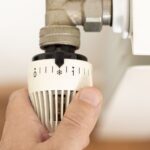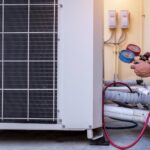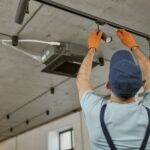Is your electric stove burner acting up again, leaving you frustrated in the middle of meal preparation? Tackling burner issues can feel daunting, especially when the cause isn’t immediately clear. Understanding the common problems and their origins is crucial for maintaining your cooking flow and ensuring your safety in the kitchen.
- Identify the usual suspects behind uneven heating or non-functional burners.
- Discover straightforward diagnostic techniques to pinpoint issues like a pro.
- Explore a blend of DIY fixes and expert help to resolve your stove’s problems efficiently.
- Learn essential maintenance tips to keep your electric stove in top shape, avoiding future headaches.
With this guide, you’ll find valuable insights and practical steps to regain control over your stove, ensuring it serves you seamlessly in future culinary adventures.
Common Electric Stove Burner Problems and Their Causes
Electric stove burners play an essential role in our everyday cooking. However, encountering problems like uneven heating, complete failure to heat, or flickering can disrupt meal preparation and cause frustration.
One common issue is uneven heating, which might stem from a damaged burner element or a poor connection with the stove socket. Inconsistent power delivery due to faulty wiring can also be a significant contributor.
A more concerning problem is when a burner experiences a complete failure to heat. This might be due to burned-out burner elements, malfunctioning burner switches, or an issue with the internal wiring.
Flickering burners are less frequent but can indicate a failing element or electrical connection problems. Power surges or loose socket connections might also cause this phenomenon.
Understanding the potential causes of these problems, such as faulty wiring or damaged elements, is crucial. It empowers homeowners to take appropriate steps toward troubleshooting and repairing their electric stove burners effectively.
Diagnosing Electric Stove Burner Issues
Diagnosing electric stove burner issues methodically requires both patience and the right tools. A systematic approach ensures that you identify the exact problem without causing further damage.
Begin by inspecting the burner. Ensure it sits securely in its socket. Loose connections can result in poor performance. If the burner is fitted correctly, consider testing it with a burner from another socket to gauge the heating consistency.
If the burner functions in a different socket, the problem could lie within the original socket or its internal wiring.
Using a multimeter is a highly effective way to assess electrical continuity. Check for current flow in the burner element and the corresponding switches. Look for breaks or inconsistencies in the circuit.
Seeking out these potential trouble spots helps pinpoint whether the issue is with a specific burner, its element, wiring, or related components. Once identified, appropriate repairs or replacements can be made.
Solutions to Electric Stove Burner Problems: DIY Fixes and Professional Help
Electric stove burners can present a variety of issues, but many can be addressed with straightforward do-it-yourself repairs. Understanding when to undertake these fixes yourself and when to call in professional help is vital for maintaining safety and efficiency.
For DIY enthusiasts, the most common issues such as uneven heating or a burner not turning on might be resolved by ensuring the burners are clean and free from debris. Often, a quick inspection can reveal if the burner coil is not properly connected to the element receptacle. In such cases, securely reconnecting the coil might restore functionality.
If your electric stove burner still doesn’t heat up, the problem could be with a faulty burner switch or a damaged burner coil. Replacing these parts is usually a simple process and can be done with basic tools. It’s crucial, however, to ensure the stove is unplugged before attempting any replacements to prevent electrical hazards.
However, there are situations where professional assistance is advisable. If troubleshooting doesn’t illuminate the problem, or electrical wiring issues are suspected, a qualified electrician should be consulted. Professionals possess the right expertise and equipment to safely execute complex repairs, ensuring long-term solutions.
Always prioritize safety by thoroughly assessing if a situation is within your skill level to handle. This will not only protect you but also ensure your appliance remains in optimal working condition.
Preventing Future Electric Stove Burner Problems with Routine Maintenance
Prevention is key to reducing the frequency of electric stove burner problems. Routine maintenance can extend the life of your appliance while keeping it functioning effectively.
A simple practice is to regularly clean the burners and the drip pans to remove food particles and grease that can cause burner issues over time. This not only keeps the burners efficient but also prevents unpleasant odors and smoke.
Inspecting the burners for signs of wear and tear can help catch minor issues before they evolve into significant problems. Look for signs like cracks in the burner coils and replace them as necessary to prevent malfunctioning.
Additionally, ensuring that the electrical connections are secure can avert potential electrical mishaps. Twice a year, conduct a thorough check to ensure all components are tightly connected and show no signs of corrosion.
Implementing these maintenance routines will not only prevent future issues but will also enhance your appliance’s lifespan, enabling you to avoid costly repairs and replacements.
Safety Precautions for Handling Electric Stove Burner Problems
Dealing with electric stove burner problems requires a careful approach to ensure these issues are resolved without endangering yourself or causing additional harm to the appliance. Prioritizing safety can prevent electrical hazards and ensure effective repair. Here, you’ll find essential safety precautions to follow when diagnosing or fixing electric stove burner issues.
Unplug the Appliance
Before starting any work on your electric stove, make sure to completely unplug it from the power source. This step eliminates the risk of electric shock and is an essential first safety measure. If your stove is hardwired, consider switching off the relevant circuit breaker in your home’s electrical panel.
Wear Protective Gear
Always wear appropriate protective gear, such as gloves and safety goggles, to shield yourself from any accidental electrical arcs or debris. Proper attire minimizes the risk of injury while handling repair tools and components.
Use the Right Tools
Utilize insulated tools designed for electrical work to avoid conducting electricity while you perform diagnostics or repairs. Tools specifically crafted for electrical safety help in minimizing accidental shocks.
Work in a Well-Lit Area
Ensure the space where you’re working is well-lit, allowing you to clearly see what you’re doing. Good lighting helps you identify components correctly and reduces errors during the repair process.
Check for Gas Leakage
If your electric stove also features a gas component, verify there are no gas leaks before you begin any work. Gas leaks are highly dangerous and require immediate attention from a professional if detected.
By adhering to these safety precautions, you can effectively tackle electric stove burner problems while minimizing risks. Staying safe ensures that you’ll be able to identify issues more accurately and resolve them without unwanted incidents. Consider sharing your own tips or concerns about electric stove safety below.
FAQ: Troubleshooting Electric Stove Burner Issues
Why is my electric stove burner not heating?
Check for faulty wiring or a damaged heating element. Ensure the connection to the power source is secure.
How can I prevent future burner issues?
Regularly clean the burners, check for any signs of wear, and have routine maintenance performed to catch issues early.
Can I fix electric stove burners myself?
Yes, simple issues like cleaning contacts or replacing elements can be DIY tasks. However, complicated electrical issues should be handled by a professional.
What tools do I need to diagnose burner problems?
A multimeter can help test electrical connections, while a screwdriver is useful for accessing elements.
Is it safe to troubleshoot burner issues on my own?
Ensure the stove is unplugged before starting any work, and follow basic electrical safety standards.





